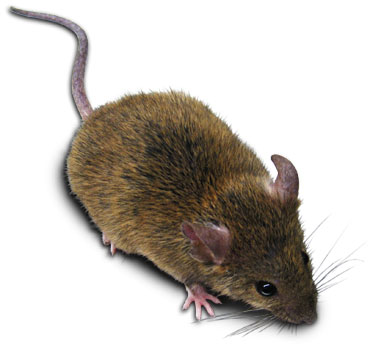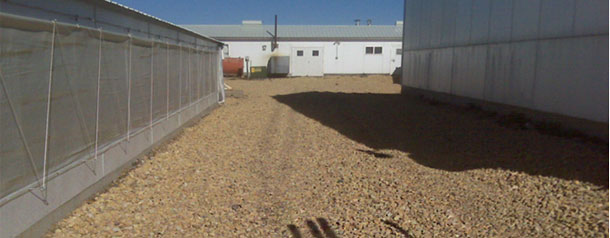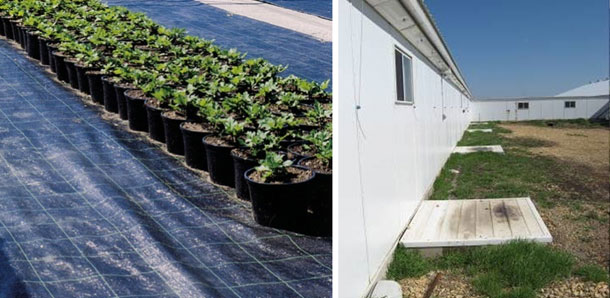
Objetive
The use of plastic and gravel to prevent the growth of vegetation around the perimeter of the barn. This is a simple strategy that will also decrease the chances for rodents to enter the facilities and it will help improve external barn biosecurity.

Description of the tip
One of the basic steps of the external biosecurity in the farm is related to disease entry control by rodents and other vectors such as birds and insects. The diseases for which rodents act as a vector include salmonellosis, bordetellosis, leptospirosis, pseudorabies, porcine dysentery, erysipelas, and toxoplasmosis. These animals are capable of spreading these diseases long distances via feces, skin, urine, saliva and blood. An effective rodent control plan is essential to the farm but the presence of external barriers that prevents the arrival and entrance of these animals into the facilities will increase its success.

Figure 1. Swine facility perimeter that is clean and without vegetation
Rodents avoid crossing open areas and traveling over irregular materials like stones. That is the key reason why always maintaining a clean perimeter around production facilities that is free of random materials and vegetation will decrease the risk of these vectors entering the facilities.
In agriculture, plastic ground barriers are used to prevent the growth of vegetation. This practice, together with the use of small stones or course gravel, will help the drainage of the area and it will keep the farm’s perimeters in perfect conditions.

| Figure 2: Example of a plastic barrier to prevent the growth of vegetation |
Figure 3: Swine facility with vegetation but free of refuse. This is an example of a farm that requires the application of recurring herbicide treatments |



